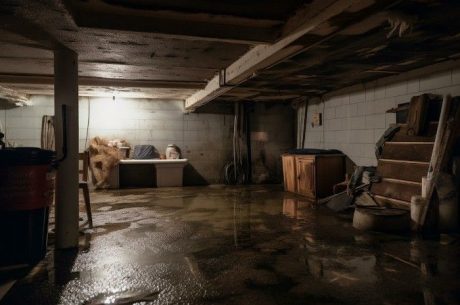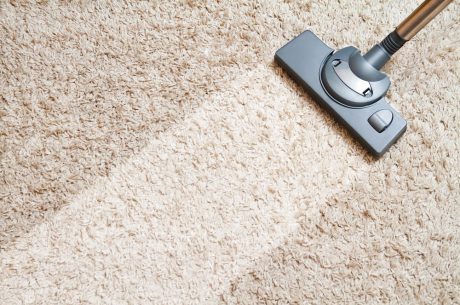In the hustle and bustle of daily life, it’s easy to overlook one crucial element that directly impacts our well-being: the air quality within the confines of our homes. Air pollution is a silent menace, often going unnoticed until its adverse effects become too pronounced to ignore. In this blog, we’ll delve into the symptoms of poor air quality and air pollution, shedding light on the subtle indicators that your home environment may affect your health.
Indoor Pollutants
Indoor pollutants come from a broad spectrum of sources, creating an array of potential threats within our homes. Among these pollutants, household cleaning products contribute to indoor air pollution, releasing airborne chemicals during routine use. The off-gassing from furniture and various building materials is another significant factor, as it introduces volatile organic compounds (VOCs) that can linger in the indoor environment, affecting air quality and increasing particle pollution levels.

Well-established as a notorious offender, tobacco smoke introduces harmful particles and toxins, further deteriorating the air we breathe indoors and increasing pollution levels. Beyond these familiar sources, cooking emissions, particularly those from specific cooking methods, can add a layer to the mix of indoor pollutants, posing potential health risks.
Moreover, mold and mildew, often from excess moisture, can release spores and mycotoxins into the air, severely compromising air quality. Identifying and addressing these sources is important for maintaining a healthy living environment, safeguarding the well-being of occupants, and promoting overall respiratory health.
Inadequate Ventilation
Inadequate ventilation poses a significant threat to air quality. Poorly ventilated spaces create a confined environment where pollutants become trapped, unable to disperse. The lack of proper air exchange exacerbates the issue, allowing contaminants to accumulate over time. Without a continuous flow of fresh air, the indoor air can become stagnant, promoting the concentration of harmful particles and compromising the health and well-being of the occupants. Addressing ventilation issues is important to ensure a constant flow of clean air and prevent the buildup of pollutants within indoor spaces.
A few subtle indicators may point towards poor air quality within the confines of your home, most of them resulting in adverse health effects. These poor air quality symptoms serve as crucial signals that the indoor air you breathe may compromise your well-being. Understanding and recognizing these signs is the first step toward creating a healthier living environment for you and your loved ones.
Respiratory Issues
Air pollution poses a major public health concern, particularly in respiratory well-being. The presence of pollutants in the air, such as particulate matter, ozone, and other harmful substances, can harm the respiratory system. Prolonged exposure to poor air quality has been linked to various respiratory issues, including asthma attacks, bronchitis, an increased risk of respiratory disease, as well as exacerbating the risk of lung disease and even lung cancer.

Persistent Fatigue and Weakness
Even after sufficient sleep, persistent fatigue and sluggishness may signal more than a busy lifestyle. Bad air quality significantly impacts our well-being, energy levels, and vitality. In polluted environments, the oxygen supply to our body’s cells diminishes, resulting in a decline in energy and a pervasive sense of weakness.
Air pollution is a substantial health concern, resulting in many adverse health effects. It strains our respiratory and cardiovascular systems, forcing them to work harder to transport oxygen to vital organs. This physiological demand not only stresses internal systems but also contributes significantly to feelings of exhaustion. Exposure to air pollution can lead to a perpetual state of fatigue, affecting daily activities and diminishing our ability to function optimally.
Frequent Headaches
Headaches are frequently not considered a potential symptom of air pollution. The impact of environmental factors on our health is intricate, and one often overlooked contributor to persistent headaches is exposure to pollutants such as VOCs. These volatile organic compounds emanate from various household products and building materials, introducing a potential source of air contamination that can lead to headaches and migraines.
VOCs, released into the air from items like paints, cleaning agents, and furniture, have been identified as culprits in triggering headaches due to their ability to infiltrate indoor spaces. The connection between air quality and headaches is becoming increasingly apparent, as studies suggest that prolonged exposure to elevated VOC levels can exacerbate headache frequency and intensity. If you find yourself reaching for pain relievers more frequently, especially without a clear explanation for the uptick in headaches, it might be wise to turn your attention to the air quality within your home.
Allergic Reactions
Allergic reactions serve as the body’s natural defense mechanism against foreign substances, and the impact of air pollution on triggering these responses cannot be understated. When breathing polluted air, individuals may experience a surge in allergy symptoms, ranging from common sneezing and a runny nose to more bothersome signs like itchy eyes or skin rashes. If you find yourself grappling with an increased occurrence of these symptoms, it could indicate your home has allergens affecting your health.

Identifying the culprits contributing to indoor allergies is crucial, and common offenders include dust mites, pet dander, and mold spores. These allergens thrive in environments with poor ventilation or inadequate cleanliness, exacerbating allergic reactions.
Deterioration in Cognitive Function
Bad air quality has a multitude of health effects. Not only does it impact physical health, but it also impacts cognitive function. Scientific studies indicate that exposure to heightened levels of indoor air pollutants can lead to neurological decline, affecting essential faculties such as memory, concentration, and problem-solving skills. If you are experiencing challenges in mental clarity or notice a decrease in mental performance, consider investigating and addressing the air quality within your home.
The home environment, typically a haven, may inadvertently harbor indoor air pollutants such as VOCs and particulate matter sourced from household products and external pollution. Enhancing indoor air quality through measures like proper ventilation and minimizing sources of pollutants becomes imperative not only for physical well-being but also for maintaining optimal cognitive capacities.
Unpleasant Odors
Detecting persistent and unpleasant odors in your living space can signal potential air quality issues. Those lingering smells from cooking adventures, tobacco smoke, or even the unwelcome presence of mold can be more than just a minor annoyance—they might indicate harmful pollutants in the air you breathe. While opening a window or using a fan might work wonders for some odors by ushering them out, it’s essential to recognize that foul odors could be a red flag, requiring a closer examination of potential sources of indoor pollution.

Moisture and Mold Issues
Excessive moisture in the air creates discomfort and sets the stage for the unwelcome growth of mold and mildew, posing significant threats to indoor air quality. Mold spores, which thrive in damp conditions, have the potential to produce allergens and irritants. When inhaled, these airborne particles can lead to various respiratory problems and other health issues, making it necessary to tackle moisture-related concerns immediately.
Indicators of moisture-related problems appear in various ways, such as water stains on walls or ceilings, the distinct musty odor permeating the air, or even visible mold growth in certain areas. Recognizing these signs is important, as they warn that your indoor environment may be compromised. Addressing moisture-related issues is a matter of aesthetics and a critical step in keeping occupants healthy and maintaining an overall healthy indoor environment.

How to Improve Your Indoor Air Quality
Improving indoor air quality is essential for maintaining a healthy living environment. One effective strategy is to ensure proper ventilation throughout your home. Regularly open windows and doors to exchange indoor and outdoor air, allowing fresh air to circulate and dilute indoor pollutants. Additionally, use exhaust fans in areas prone to moisture, such as bathrooms and kitchens, to prevent mold and mildew buildup. Investing in a high-quality air purifier equipped with a HEPA filter can enhance air quality by capturing particles like dust, pollen, and pet dander.
Reducing the sources of indoor pollutants is another crucial step in enhancing air quality. Avoid smoking indoors, as tobacco smoke contains numerous harmful chemicals that can linger in the air. Minimize harsh cleaning products and opt for environmentally friendly alternatives to reduce the release of VOCs. Regularly dust and vacuum to eliminate accumulated particles, and consider using air-cleaning plants, such as spider plants or peace lilies, known for their ability to filter and purify indoor air naturally.
Maintaining a clean and healthy home environment also involves controlling humidity levels. Excess moisture can contribute to the growth of mold and dust mites, both of which can negatively impact air quality. Use dehumidifiers in damp areas and fix any water leaks promptly. Regularly clean and replace air filters in heating, ventilation, and air conditioning (HVAC) systems to ensure optimal efficiency in removing airborne particles.
Understanding the sources of unhealthy air and taking proactive measures to improve air quality is paramount for the well-being of you and your loved ones. Regular maintenance, proper ventilation, and the use of air purifiers can go a long way in creating a healthier indoor environment. Prioritizing the air you breathe can help prevent future health problems and protect your and your family’s overall quality of life.
Is Your Property Damaged by Mold, Water, or Fire? Contact PuroClean of Broken Arrow Today!
If your property has suffered damage from mold, water, or fire, PuroClean of Broken Arrow stands ready to provide comprehensive property restoration services. Our experienced team is dedicated to addressing the aftermath of these disasters, ensuring thorough and efficient restoration. Whether you’re dealing with the destructive effects of mold growth, water damage, or the aftermath of a fire, PuroClean of Broken Arrow has the expertise to assess and remediate the situation. Call (918) 877-7373 for professional and reliable restoration services that prioritize the swift recovery of your property and peace of mind.




 PuroClean of Broken Arrow
PuroClean of Broken Arrow